Brisbane's Courier Mail newspaper recently posed the question "Have these been the most boring elections?". This triggered an exchange of e-mails which began when Independent Mayoral candidate James Sinnamon wrote an open letter to the Courier Mail's City Hall reporter. See further below for Emma Chalmers' reply and James Sinnamon's further response.
Dear Emma Chalmers,
On page 11 of the Courier Mail of election day Saturday 15 March, you asked:
"Have these been the most boring Council elections?"
Given that your newspaper has systematically excluded any views which clash too markedly with the orthodoxy of the Courier Mail's editorial writers, is it any wonder?
And given the striking similarities between the policies of both the Labor Party and the Liberal Party, I would have thought that the Courier Mail, if it had wanted to inject any excitement into the campaign, let alone be objective and balanced, would have given more coverage to alternative views about how our city should progress.
As far as I can tell, all that Brisbane residents were able to learn from the pages of Courier Mail newspaper of my policies was contained within one sentence at the end of your article "Newman wary on rates as Rowell dithers on costings" of Friday 14 March1 :
"... Mr Sinnamon ... wants a population cap."
Have I missed something?
It's not as if I had not provided you with material about me and it is not as if I didn't have something to say that was not relevant to the campaign or that was not different to what had been said by others. I sent you two media releases including links back to my web site (candobetter.wikispaces.com, candobetter.net 2). You interviewed me at City Hall on Thursday 14 March and you would have heard my contribution to the debate amongst the candidates.
Why was it not possible for your articles not to have fleshed out my views a little more? As examples:
- Why couldn't you have reported my point, backed up by the views of the Local Government Association, that it would have been impossible for Greg Rowell to keep his promise to keep rates at less than the rate of inflation without sacrificing current service levels service if population growth continues3?
- Why couldn't the point I made during the debate on Friday, linking of Brisbane's current crisis of extreme housing unaffordability to Queensland's population growth, recklessly encouraged by Lord Mayor Campbell Newman, the BCC Labor Councillors, the Queensland State Government and, I would add, the Courier Mail, itself, have been reported in Saturday's Courier Mail4?
- Why couldn't the point raised by members of the audience, and taken up by me, about Campbell Newman's failure to honour his 2004 election promise to Cannon Hill residents to save Minnippi Parklands, have been reported?
I will concede that I have been far less prolific than I wanted to be, due to time constraints, but I still believe that what I did provide you with certainly warranted considerably more than less than half of one sentence of coverage.
I believe that Lord Mayor Campbell Newman's unprecedented personal triumph of yesterday owes much to the Courier Mail's unbalanced reporting of the campaign and its unbalanced reporting, in past years, of issues at stake in Saturday's election - the North South Bypass Tunnel, the Hale Street Bridge, population growth, clearing of bushland, the water crisis, housing unaffordability, the second airport runway, the proposal for a new passenger ship terminal to cater for luxury passenger cruise ships, the bizarre proposal to entomb one third of the Brisbane River adjacent to the North Bank under concrete, etc.
As a result, Lord Mayor Campbell Newman intends to take this result as a mandate to continue with his extravagant plans to construct an alternative transport network underground and many other plans which, if not stopped, will destroy what remaining quality of life Brisbane has left to offer and its long term sustainability. Mr Newman's road infrastructure plans, given their ever-escalating costs and the ongoing depletion of the world's stocks of petroleum, make as much sense as the construction of pyramids by the Mayan rulers in the midst of the growing ecological crisis which was to ultimately destroy their civilisation.
The Brisbane residents will learn, to their cost, of the mistake they made on Saturday, and, when they do, I think many will reflect upon what factors influenced them to vote the way they did on Saturday.
As one intending to stand for office in 2012, I will have a lot to say about this in coming years. Will the Courier Mail be prepared, from now on, to report more objectively on these issues than it has in the past?
Finally, I have posted this to my web site. If you don't believe I have been fair to you in this letter, you are welcome to state why. I will post any response from you immediately below this letter, if you wish me to. Also, please feel welcome to phone me about this.
yours sincerely,
James Sinnamon
Footnotes
1. See "Newman wary on rates as Rowell dithers on costings", Courier Mail, 14 March 2008. I would also like to point out that I don't think the photo of me does me justice. I did cooperate with the cameraman by looking down at him at an odd angle. I would have with appreciated either being advised to pose differently or having a better photo of me selected.
2. The domain names begining with 'candobetter' predated any thoughts of my challenging 'Can Do' Campbell for election as Lord Mayor of Brisbane. I would have chosen 'wecandobetter.net', but that was taken. Nevertheless, I believe that Brisbane residents would have found the domain name to have been true of myself had I been elected.
3. For further information, see, also, my response to the questionnaire from the Property Council of Australia.
4. See "Newman's Liberals close on Brisbane majority", Courier Mail (online) of Friday 14 February. This story was at the URL www.news.com.au/couriermail/story/0,23739,23376890-952,00.html, but is seems that the story at that location has been over-hastily removed and replaced with the story Landslide means Campbell Newman must deliver promises of Saturday 16 March.
Emma Chalmers response of Monday 17 March
Dear James,
Thank you for taking the time to put together a comprehensive email.
From what you have written it appears that you have already made up your mind about the reasons you feel that you didn't get adequate coverage during the election, so I don't feel that there is much I can say that will change your view.
As you would appreciate, we have many demands on space in our paper and, while a number of mayoral aspirants around Queensland would have liked greater coverage, we have an obligation to adequately scrutinise the promises being made by the major parties and major contenders. I note you secured 700 votes on Saturday.
As you would also appreciate, even if you were to be elected Lord Mayor, the agenda of one of the major parties would end up prevailing because you would not have the numbers on the council floor to push through your policies.
I will point out that you did manage to get your photo prominently in the paper on Thursday, a feat not managed by the bulk of the mayoral aspirants in Queensland, let alone in Brisbane.
Kind regards,
Emma Chalmers, City Hall Reporter
James Sinnamon's further response of 20 March to Emma Chalmers
Dear Emma Chalmers,
Firstly, thank you for having taken the time to read my e-mail and respond to it. I have posted it to my website, immediately below my original letter. Please let me know if that is not OK. You are, of course, welcome to respond further, as is anyone else who wishes to either defend or criticise the Courier Mail's recent coverage of the Brisbane City Council's elections.
You wrote: From what you have written it appears that you have already made up your mind about the reasons you feel that you didn't get adequate coverage during the election, so I don't feel that there is much I can say that will change your view.
I believe that, to the contrary, I can fairly state that I am always open to persuasion by the evidence. I try to live by Keynes' dictum:
"When the facts change, I change my mind."1
At the moment, the overwhelming evidence is that, for the past four years at least, the Courier Mail has not provided balanced coverage of the issues at stake in last Saturday's elections. These include, as referred to in my earlier e-mail, the North South Bypass Tunnel and the Hale Street Bridge, in favour of which the Courier Mail has repeatedly published editorials, ignoring mountains of contrary evidence provided by experts, concerned citizens, and affected residents. I will pursue this further below.
You wrote: As you would appreciate, we have many demands on space in our paper and,while a number of mayoral aspirants around Queensland would have liked greater coverage ...
If you had only slightly reduced your newspaper's lavish, uncritical and fawning coverage of almost every word coming from Campbell Newman's campaign machine, I believe that you could easily have found the the space to give the independents more reasonable coverage.
Whilst I appreciate the Courier Mail's efforts to cover all of the local Government elections in Queensland, the Courier Mail is principally a Brisbane newspaper. So I would have thought it should have been able to manage, at one point over the past four weeks, to print a modest profile of each of the Mayoral candidates. If the local newspapers, B magazine, Qnews, with much more limited space, could have managed to do this then why not the Courier Mail? Certainly this could have been done with utmost ease on-line.
You wrote: ... we have an obligation to adequately scrutinise the promises being made by the major parties and major contenders. ...
But the fact is you did not. A case in point is the story of Thursday 13 March "It's plane to see, this Mayoral race has gone green" with a photo depicting Lord Mayor Campbell Newman accompanied by Virgin Blue flight attendants in front of a aeroplane pushing trolleys with seedlings . That planting a few trees around Brisbane can in any way offset the destruction of vegetation caused by land-clearing and infilling residential developments in the suburbs of Brisbane, let alone Mr Newman's efforts to make Brisbane more car-dependent than ever before, is hotly disputed by many. This is classic greenwashing. In case you wish to better understand how corporations and governments employ greenwashing in order to cover up their environmentally harmful activities, can I suggest you read the transcript2 of Radio National's Background Briefing documentary "Greenwashing" of 10 February 2008. The point made by Cannon Hill residents and myself during Friday's debate about Campbell Newman's failure to honour his 2004 election promise to protect the Minnippi Parklands was certainly relevant and, I believe should have been reported on those grounds alone.
In regard to the Hale Street toll bridge, far from scrutinising the case for the Hale Street Bridge, the Courier Mail has enthusiastically clamoured for the bridge to be built and has systematically censored from its pages nearly all views critical of the bridge.
The Courier Mail did not publish the media release3 of 24 February from the "Stop The Hale Street Bridge" group nor did it publish the informative and well-written feature article "What price for City Hall accountability?"4 submitted by Darren Godwell, President, West End Community Association on 5 March. Moreover, David Bratchford of the "Stop The Hale Street Group" tells me his letters are not published, including one in response to an editorial in favour of the Bridge.
Whilst the Courier Mail does, on occasions, carry stories about some of the more overt adverse consequences, including the traffic chaos anticipated in the Hale Street Bridge's construction and cost-blowouts, they seem to be quickly forgotten by your editorial writers or when pro-bridge propaganda from Mr Newman is reported.
The case for these extravagant white elephants in the face of looming world-wide depletion of petroleum supplies simply does not exist. I believe that if the Courier Mail had scrutinised Campbell Newman's case for these projects and his overall record, as you claim to have done, he could not have won last Saturday's election and those who had unambiguously stood against these polices would have received a much higher vote.
These examples are only the very tip of the iceberg of the Courier Mail's unbalanced reporting in favour of Campbell Newman.
You wrote: ... I note you secured 700 votes on Saturday.
As of now, it has reached exactly 800 votes5. Still, at only 1.5 per thousand formal votes cast, I won't attempt to claim that that was a resounding vote for me. However ...
My point of contention still stands. I had views which differed substantially from those of the major candidates and I believe that the Courier Mail should have reported those views, especially as you, yourself, had correctly observed how boring your unbalanced focus upon the major candidates, with little tangible policy differences, had made your coverage of the campaign. Had this happened, I believe my vote would have easily been much higher.
You wrote: As you would also appreciate, even if you were to be elected Lord Mayor, the agenda of one of the major parties would end up prevailing because you would not have the numbers on the council floor to push through your policies.
Thanks. I greatly appreciate that you have taken the trouble to speculate on an outcome that may not have been likely last Saturday. Had I had been elected, I think it would have also been likely that City Council would have consisted of many councillors other than those from the major parties. If, to the country, the council were to have been dominated by the major parties, I would, nevertheless, have continued to argue within the council and publicly for policies I believe to be in the best interests of the people of Brisbane. In such an unlikely scenario, I would hope that my views would be reported by the Courier Mail. As I believe my reasons to be sound, I see no reason why I would not have gained broad public support, in which case there would be no reason to assume that the Councillors could not be convinced to support my policies.
In contrast, I believe that if Campbell Newman's polices of the past four years had been truly in the interests of the people of Brisbane, then he would have had little difficulty in overcoming what he has labelled as 'obstruction' on the part of Labor majority leader David Hinchliffe. In most cases the reasons for Hinchliffe's 'obstruction' was well-founded community opposition to his white elephant projects, which, as I repeat, was not fairly reported in your newspaper. I believe that Lord Mayor Campbell Newman can count himself lucky that, instead of standing up for the affected communities, Hinchliffe gave in to him. I don't believe Campbell Newman would be Lord Mayor today, had David Hinchliffe stood his ground.
You wrote: I will point out that you did manage to get your photo prominently in the paper on Thursday, a feat not managed by the bulk of the mayoral aspirants in Queensland, let alone in Brisbane.
Of course I am grateful, but I had expected some publicity in return for my effort to be at the City Hall for that event. However, I was, frankly, aghast when I saw how that photo6 turned out. I did not recognise myself until after I had read my name under the caption under the newspaper. Others, who knew me, tell me that they were barely able to recognise me either. Perhaps, I have to get used to the fact that my thinning hair doesn't always lend itself to the photographic portraiture I would wish for, However, the Quest Newspaper photographer took some effort to make sure the photo he took turned out well. If your photographer had let me know how looking down at such an odd angle but not at the camera in the way I did had affected my appearance, I would certainly have posed differently.
I also believe that words describing what I stood for would have been more helpful to me than even a photo which had turned out well.
Finally, I realise that you may not necessarily be personally responsible for all of the matters of which I complain. Nevertheless, I have to deal with these issues at face value.
I still greatly appreciate the time and effort you have taken and your courtesy.
Yours sincerely,
James Sinnamon
Footnotes
1. See en.wikiquote.org/wiki/John_Maynard_Keynes
2. See transcript of Radio National's Background Briefing documentary "Greenwashing" of 10 February 2008 at www.abc.net.au/rn/backgroundbriefing/stories/2008/2155943.htm.
3. See "Hale Street record set straight in runup to Gabba ward election" of 24 Feb 08 at www.stopthehalestreetbridge.com/downloads/media releases/HSL_media_release_240208.pd, candobetter.net/node/336.
4. See "What price for City Hall accountability?" of 5 Feb 08 at www.stopthehalestreetbridge.com/downloads/media releases/OpEdPieceFeb2008.pdf, candobetter.net/node/337
5. See www.ecq.qld.gov.au/elections/local/lg2008/BrisbaneCity/results/Mayoral/summary.html
6. See www.news.com.au/couriermail/story/0,23739,23369923-3102,00.html
 We sometimes complain about politicians who don't do what they promise to do after they get elected. Ironically, it is sometimes much better for the country when some of these promises are broken.
We sometimes complain about politicians who don't do what they promise to do after they get elected. Ironically, it is sometimes much better for the country when some of these promises are broken.

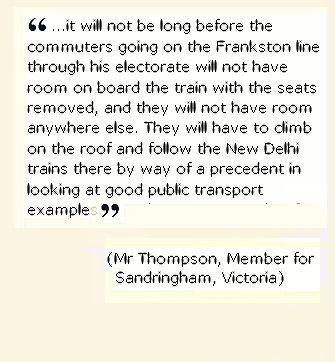


 Word is that Melbourne is getting its 1 million more ten years early and that the Vic Government is in a panic because it has no idea how many permanent new guests have taken up its foolhardy invitations to come and stay. Who the hell is responsible?
Word is that Melbourne is getting its 1 million more ten years early and that the Vic Government is in a panic because it has no idea how many permanent new guests have taken up its foolhardy invitations to come and stay. Who the hell is responsible?
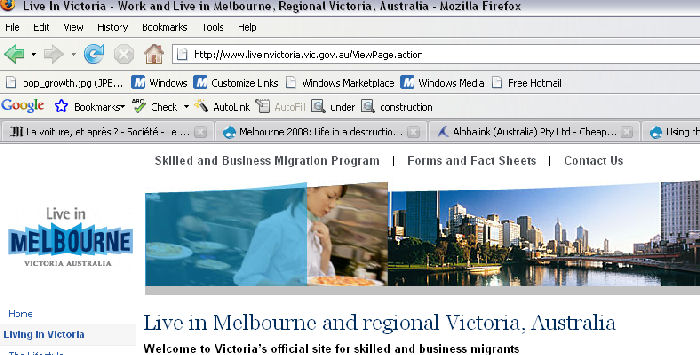
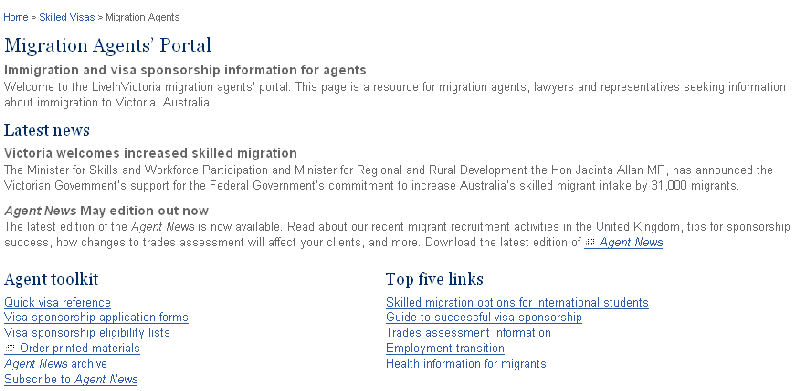

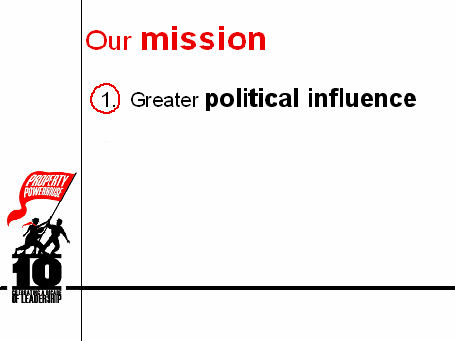

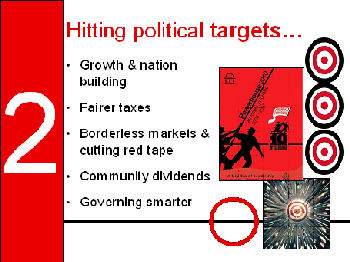
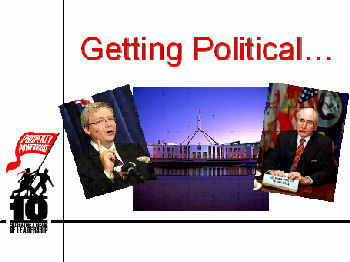

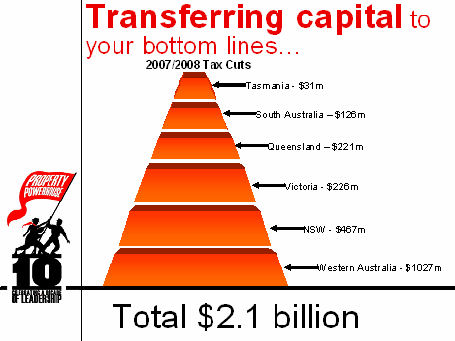
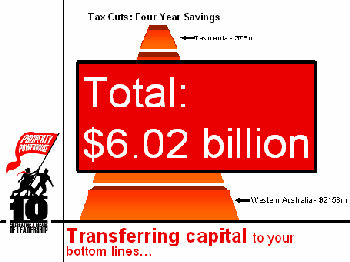

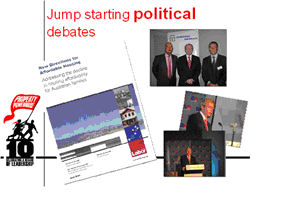
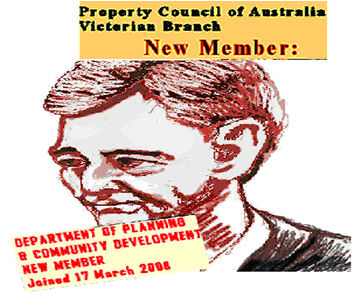
 The University of Western Australia wants to bulldoze rare bushland in the middle of our city for future property development. The Minister for the Environment David Templeman is soon to make his decision on whether 60% of this pristine 36 hectare bushland will be destroyed to make way for offices and housing.
The University of Western Australia wants to bulldoze rare bushland in the middle of our city for future property development. The Minister for the Environment David Templeman is soon to make his decision on whether 60% of this pristine 36 hectare bushland will be destroyed to make way for offices and housing.
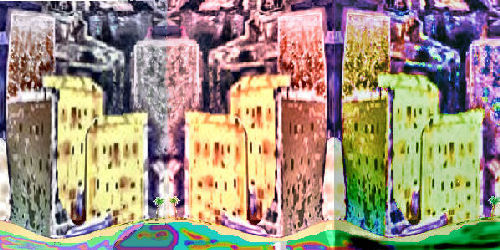





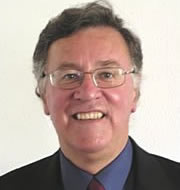


 What organisation has only 24 members of which the first ten comprise the current Prime Minister and nine past and present Australian Prime Ministers or Prime Ministerial contenders? And why would they be so dedicated to an organisation with a focus so antithetical to democracy and Australians? Read on.
What organisation has only 24 members of which the first ten comprise the current Prime Minister and nine past and present Australian Prime Ministers or Prime Ministerial contenders? And why would they be so dedicated to an organisation with a focus so antithetical to democracy and Australians? Read on.
Recent comments